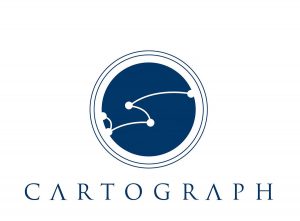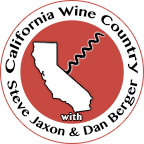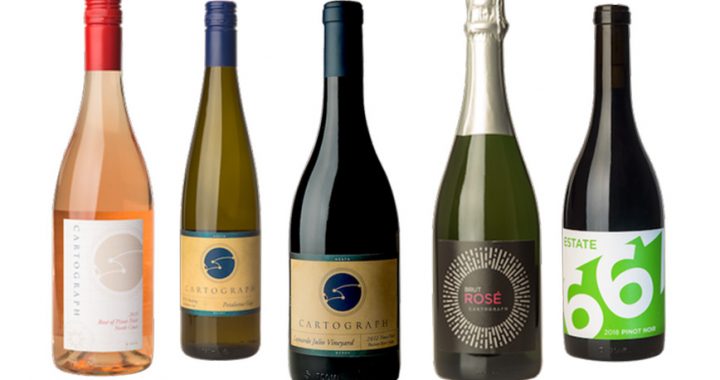Podcast: Play in new window | Download (Duration: 34:47 — 16.0MB) | Embed
Subscribe: Apple Podcasts | RSS | More
 Alan Baker of Cartograph Wines returns to California Wine Country with Steve Jaxon and Dan Berger. He has been on this show before, the last time was here, on January 8, 2020.
Alan Baker of Cartograph Wines returns to California Wine Country with Steve Jaxon and Dan Berger. He has been on this show before, the last time was here, on January 8, 2020.
First, they taste a bottle from Dan Berger’s cellar, a 2017 Chardonnay from New Zealand, which was fermented in a concrete egg. It’s the first one made in New Zealand ever, made by a master concrete expert. With the shape of the egg, the fermentation forces the liquid to rotate itself. You don’t need human intervention to mix it. It is an unusual wine. It is very Bergundian, has an earthy funk, and a tropical fruit note, a bit like pineapple. It comes from Tony Bish Wines in New Zealand. It has 13.5% alcohol. It comes from Hawk’s Bay, a cooler region on the North Bay, known for its Cabernet Sauvignon.
They launched the Cartograph brand in 2010 with a Pinot Noir and a dry Gewurtztraminier. They specialize in Pinot Noir and dry Riesling. They do a little rose and sparkling once in a while. Alan Baker worked for Minnesota Public Radio as a producer and recording engineer. He followed his interest out here in 2005, got a foothold here working and moved to California. He has gone to UC Davis to take some classes but doesn’t have an enology degree.
They taste a 2019 Riesling from a vineyard near Marin county, where it’s cold and wet. Dan Berger says it’s one of the best Rieslings he has ever tasted. It’s about 12.4% alcohol. This wine has “sensational” aromatics, from the long hang time on the fruit. There is a trace of apple, but like a jazz apple, spicier than the usual apple. This Riesling has a trace of sugar and a trace of acidity and both are playing against each other at once, back and forth. Dan says that Riesling reflects its region better than any other white wine grape. It’s nice and dry but offset by a tiny trace of sugar. Alan says that’s the joy of Riesling. Across the sweetness spectrum, there is still the zip of acid and dryness.
The Cartograph logo is a stylized globe, with five points on the globe that are important to them and their journey with wine. Cartograph is doing personal virtual tastings with wine club members.
Dan Berger says that the Bottle Barn Riesling selection is excellent.
Dan and Alan love Riesling and can’t stop singing its praises. Alan: “It’s just such a magical grape. It’s the greatest wine grape on the planet.” Dan says he has some 30- and 35-year-old bottles of Riesling. The first plantings of grapes in Germany were done by the Romans but most of the grape varieties had trouble with the climate. After hundreds of years, they found that the Riesling was the one that did the best with the least amount of effort. Dan has been on Riesling vineyard properties in Germany that are so steep that you need to hold on to a steel cable to walk around. Steve asks, what about the sweet Rieslings? Alan says the sweetness is a stylistic decision but also depends on your weather, if it’s warm, you will have to stop the fermentation short, so it’s not too strong. Dan says there is almost no limit to how long you can age a good Riesling, which can last 10 or 15 years.
Cartograph Wines does outdoor tastings, roughly at 11, 1 and 3. See the site for details.
Now they taste a Pinot Noir. The knock on domestic Pinot Noir is that it doesn’t age. But Alan says if you make it properly, you may get a good result with age. This is silky, flavors of roasted beets, a taste of pomegranate in the nose, and a spice component like ripe cherries. At first it was fruity. As it ages it has shifted toward truffle and mushroom. Later in its aging it will shift back to its honeysuckle stage. Dan says once it has had two hours of air, it won’t get any better with more time before you drink it.
They taste a Pinot Noir called Leonardo Julio. Julio (“Giulio” in Italian) is a Gallo, his grandfather is Leonardo. This is a 2013 sparkling from that vineyard.
There is also a 2019 North Coast Rosé of Pinot Noir. It has a tiny hit of salmon color only. Alan is also good at using Oregon fruit, such as the Brooks Rieslings that age for 20 years.
A 2018 Russian River Valley Pinot Noir blend is the next tasting. It is on their tasting menu at the winery. The vineyard is near the other famous Russian River Valley vineyards like Williams-Selyem and Rocchioli.
If you live between Petaluma and Cloverdale, they will bring your wine to you.
Dan says if you’re making Riesling and Pinot Noir, it shows passion, more than most other varieties. “What Alan is doing is quite commendable and the wines are exemplary. The quality is there and the price is fair.”

